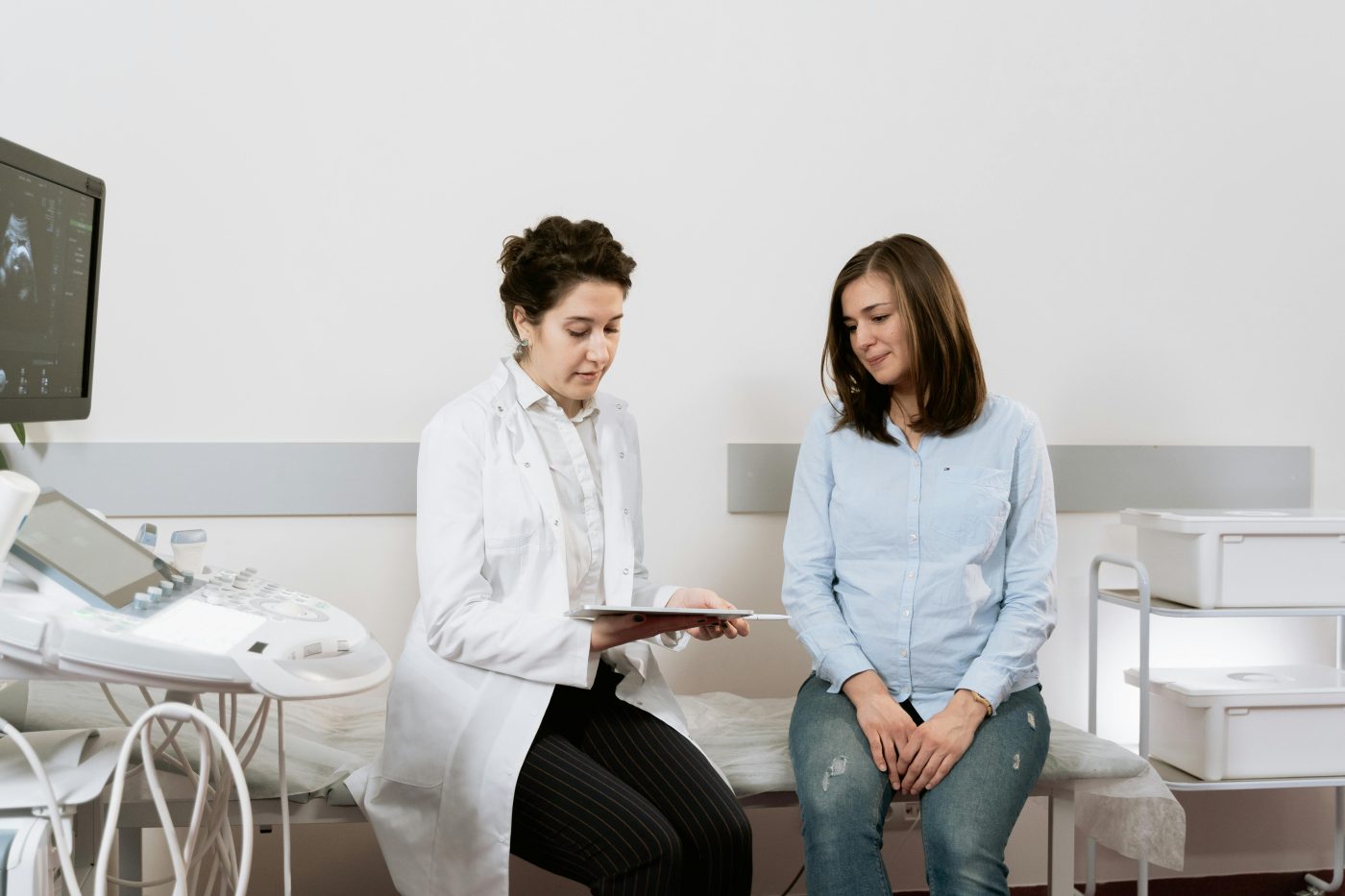Quick reminder: This page is education, not personal medical advice. If you have new headache, scalp tenderness, jaw pain with chewing, or any vision change, get same-day care to rule out giant cell arteritis (GCA).
PMR Basics (what it is, who gets it)
- What is polymyalgia rheumatica (PMR)?
PMR is an inflammatory condition that causes deep aching pain and stiffness in the shoulders and often the hips, usually worst in the morning. It mainly affects adults over 50. Doctors diagnose it from your story, exam, inflammation blood tests, and sometimes imaging. - What are the classic symptoms?
Bilateral (both-sided) shoulder and/or hip aching with morning stiffness lasting over 45 minutes that eases as you move. Many people also feel tired or “flu-ish.” - Who gets PMR?
Mostly adults 50+, especially in their 60s–70s. It’s more common in women. - What does “polymyalgia” mean—and how is PMR different?
“Myalgia” = muscle pain; “polymyalgia” = many muscle pains (a symptom, not a diagnosis). PMR is a specific disease with a typical shoulder/hip + morning-stiffness pattern. - Is PMR the same as muscle weakness?
No. PMR limits movement because of pain and stiffness, not true muscle weakness. If you can’t rise from a chair or lift the arms because the muscles are weak, your clinician will look for other causes. - Is PMR permanent?
Usually no. With treatment, many people can taper off medicine over 1–2 years; some need longer or a very low maintenance dose.
Diagnosis (how doctors figure it out)
- How is PMR diagnosed?
There’s no single test. Doctors put together your story (shoulder/hip + morning stiffness ≥45 min in age ≥50), exam, ESR/CRP, and sometimes ultrasound. Classification criteria from EULAR/ACR help structure thinking but don’t replace judgment. - What are the EULAR/ACR “criteria” in plain words?
They award points for morning stiffness > 45 min, hip pain/limited motion, negative RF/ACPA, and no peripheral joint pain; with ultrasound, accuracy improves. These criteria support (not dictate) diagnosis. - Do I always need imaging?
Not always. Ultrasound is helpful when the story is unclear or to rule out rotator-cuff tears. Ultrasound can show bilateral bursitis around the shoulders/hips—a pattern that supports PMR when the story fits. - What else could it be (look-alikes)?
Elderly-onset rheumatoid arthritis, rotator cuff disease/frozen shoulder, hip osteoarthritis, spine conditions, thyroid problems, statin-related muscle symptoms, and inflammatory myopathies are common mimics your clinician considers. - Can ESR/CRP be normal in PMR?
Usually they’re elevated, but a minority of people have normal ESR, and rarely both ESR and CRP are normal. Your whole picture still matters. - What blood tests are typical?
ESR/CRP (inflammation) plus CBC, chemistry panel, CK (muscle enzyme), TSH (thyroid). RF/anti-CCP may be checked to help exclude rheumatoid arthritis. - What does a diagnostic ultrasound report look like?
Common supportive phrases include “bilateral subacromial-subdeltoid bursitis” and “biceps tenosynovitis.” A normal scan doesn’t exclude PMR if your story is classic. - When is MRI or PET used?
MRI helps when symptoms are one-sided or to rule out tears/spine/hip OA. PET/CT is reserved for select, unclear cases or to assess large-vessel inflammation—not routine for typical PMR. - Should doctors try a “steroid test” to confirm PMR?
A good response supports PMR but isn’t definitive—other problems can improve briefly with steroids. Doctors avoid using response alone to make the diagnosis.
GCA (giant cell arteritis) and urgent red flags
- How are PMR and GCA related?
They’re “sister” conditions; some people with PMR develop GCA, and many with GCA have PMR-type aches. - What are GCA red flags?
New headache (temples), scalp tenderness, jaw pain when chewing, or any vision change. These are same-day symptoms—seek urgent care. - How is GCA checked quickly?
Today, vascular ultrasound is recommended as first-line imaging where expertise exists, and doctors often start high-dose steroids before all tests are back if vision is at risk. - Can GCA cause permanent problems?
Yes — vision loss can be permanent. That’s why speed matters.
Treatment (what helps, how long, what to expect)
- What’s the first-line treatment for PMR?
Prednisone (a steroid) at a low-to-moderate dose, then a slow taper over months based on symptoms and labs. - How fast should I feel better?
Many people notice clear improvement within days to 1–2 weeks once the dose is right. If there’s little change, your team rechecks the dose and the diagnosis. - What’s a typical starting dose?
Guidelines allow a range (often 12.5–25 mg/day), tailored to your size, risks, and severity. Your clinician individualizes the plan. - How is prednisone tapered?
A common approach is to reach 10 mg/day by ~4–8 weeks, then taper slowly (e.g., by 1 mg every 4+ weeks) while monitoring symptoms and ESR/CRP. Faster tapers mean more relapses. - How long will I be on treatment?
Many complete therapy in 1–2 years; some need longer or a tiny maintenance dose. It depends on relapses and side-effect risks. - What if prednisone causes side effects?
Your team will use the lowest effective dose, add bone protection (calcium/vitamin D ± bone-building meds), and monitor blood sugar, blood pressure, and eyes. Lifestyle steps (movement, salt/sugar awareness, sleep) help too. - Are there steroid-sparing medicines?
Yes. Methotrexate is often used to reduce steroid exposure in people who relapse or are at high risk of side effects, per guidelines. - Are there biologic options?
Sarilumab (Kevzara®) — an IL-6 receptor blocker — is FDA-approved for adults with PMR who can’t taper steroids or didn’t respond well. Your clinician will decide if it fits your case. - Do NSAIDs (like ibuprofen) cure PMR?
No. They may provide short-term pain relief for some, but they don’t control the underlying inflammation the way steroids (and, when needed, steroid-sparing meds) do. - What if I flare (relapse) during taper?
Tell your clinician. Plans often step back to the last dose that worked for a few weeks, then resume a slower taper. - What’s the long-term outlook?
Generally good with careful tapering and monitoring. The main risks come from steroid side effects, which are preventable/manageable for most people.
Living well with PMR (movement, food, sleep, daily life)
- Should I rest or move?
Gentle movement helps — short walks, easy shoulder/hip range-of-motion, and later light strength training. Start where you are; avoid over- and under-doing it. - What kind of exercises are best early on?
Daily shoulder circles, pendulum swings, hip flexion/extension, short walks, and posture work. Add light resistance gradually as symptoms improve. - Can food choices help?
An overall heart-healthy, anti-inflammatory pattern is reasonable: plenty of vegetables, fruit, whole grains, lean protein, and healthy fats; watch salt (blood pressure) and added sugars (blood sugar), especially while on steroids. - Will I gain weight on prednisone?
You might. Focus on protein at each meal, high-fiber foods, and routine movement. Your team can tailor nutrition to your health conditions. - How can I sleep better with PMR and steroids?
Use heat before bed, support shoulders/hips with pillows, take the steroid in the morning (if your clinician agrees), limit caffeine late, and keep a steady sleep routine. - Can I drink alcohol?
Ask your clinician. Alcohol can interact with methotrexate and may raise blood pressure or blood sugar on steroids. - What about vaccines?
Staying up-to-date helps lower infection risk—especially if you’re on higher-dose steroids or biologics. Ask which vaccines are recommended for you and when to schedule them relative to doses. - Can I travel?
Yes — with planning. Carry medications (in original containers), a doctor’s summary, and a backup taper plan. Mind time zones for steroid timing; pack infection-prevention basics. - What about work and daily tasks?
Use energy-saving tricks: sit for tasks when possible, break chores into chunks, use long-handled tools, and warm up joints before activity. - Is it safe to drive?
If your shoulders/hips are too stiff to check blind spots or brake quickly, wait until pain is controlled and mobility improves. Try gentle warm-ups before driving.
Safety, monitoring, and special situations
- What tests will I need during treatment?
Usually ESR/CRP plus checks on blood pressure, blood sugar, and (if needed) bone density (DEXA). If taking methotrexate or a biologic, you’ll have specific lab schedules. - How often are follow-ups?
Often every 4–8 weeks early on, then every 8–12 weeks later—adjusted to your progress. - How do we protect bones on steroids?
Adequate calcium + vitamin D, weight-bearing exercise, and sometimes a bisphosphonate or other bone medicine if your risk is high. A DEXA scan may be recommended. - I have diabetes. Can I still be treated?
Yes — your medical team will monitor and adjust your diabetes plan because steroids can raise blood sugar. Continuous glucose monitors (CGMs) can help some patients. - I have high blood pressure or heart disease.
Steroids can raise BP and fluid retention; expect closer monitoring and lifestyle tweaks (salt awareness, activity). Your clinician will weigh benefits and risks. - I take a statin and my muscles hurt—is this PMR?
Statins can cause muscle symptoms. Your clinician may check CK and adjust medicines. The PMR pattern is typically both-shoulder/hip stiffness with high ESR/CRP, not isolated calf/thigh aches. - Do I need to worry about infection?
Higher steroid doses and biologics slightly increase risk. Wash hands, keep vaccines current, and call early for fever or signs of infection. - Is PMR life-threatening?
PMR itself is usually self-limiting and not linked to early death. The serious risk is GCA-related vision loss, which is why red flags require same-day care. - Can PMR come back after I’m off medicine?
Yes, relapses can occur—even after stopping. Most respond to restarting/adjusting treatment. - When should I get a second opinion?
Anytime the diagnosis feels uncertain, symptoms don’t improve as expected, relapses are frequent, or side effects stack up. A rheumatologist can confirm the plan, adjust taper speed, and consider steroid-sparing options.











Good luck!